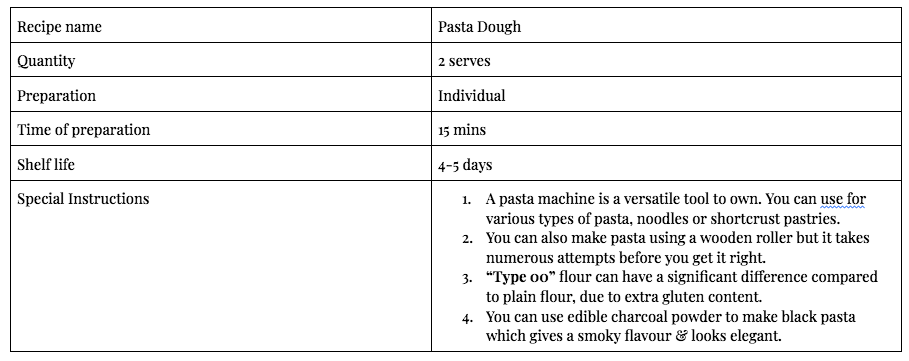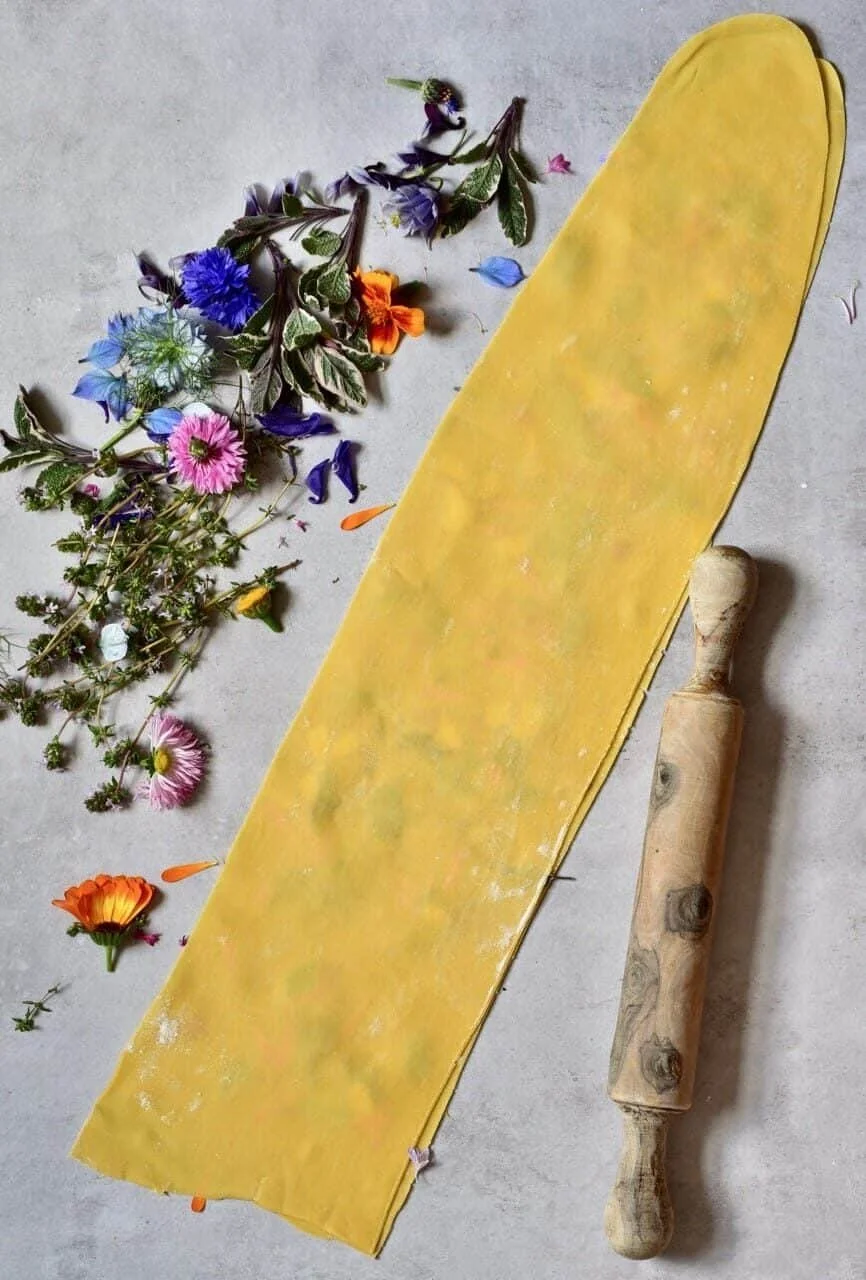The secret of pasta making
Pasta making is a fine art which takes years to master for any chef working in the industry. Every chef will have their own variations of pasta dough. The key is to knead the dough using the right amount of ingredients & the right technique.
This recipe will reveal the do’s & don'ts of a high quality homemade pasta. Made with everyday ingredients found in the kitchen, crafted from chefs of Italy. Let's dive in-
Ingredients:
Type 00 flour- 200 gm (plus 100gm for dusting)
Whole eggs - 2 no.
Extra virgin olive oil- 50 ml
Semolina (during rolling)
workflow:
stage 1 - making the dough
Form a well in flour & add eggs. Using a fork, beat the eggs together and slowly start incorporating the flour, starting from inwards.
Once egg mix has thickened, roughly add rest of the flour from outside.
Using a dough scraper, fold & press the dough in circular motion.
Knead the dough gently until combined. Use the extra flour for dusting.
After 5-6 minutes, the dough must be smooth & silky. The gluten formation will also help the dough to be elastic in nature.
Drizzle extra virgin olive oil on top and wrap the dough in clean wrap. You can place a damp cloth top if you don't have a clean wrap.
Rest at room temperature for 20-30 minutes before rolling.
step 2 - rolling the dough
Use semolina for rolling pasta as it elevates the texture.
For pasta dough, the key is to start from a higher number to a lower number, depending on the type of pasta you are making.
step 3 - common types of pasta
spaghetti
A type of long pasta with thin strands approximately 25-30 cm in length. Add edible charcoal powder for black spaghetti perfect with seafood.
Set your pasta machine at number 6. Roll the pasta thrice by folding the dough every time.
Now, roll once at 5 & come down to 4. We don’t want to go thinner than that.
Now set your blade for spaghetti and dust flour as you go to avoid sticking. Place a damp cloth to keep the pasta moist & fresh.
It’s always better to use it immediately, if not dust flour and clean wrap properly. Store in the fridge, can last upto 2 days.
FLORAL DESIGNED RAVIOLI
A type of stuffed pasta commonly found in squares or circles. Depending on the type of pasta machine, the same thickness of the previous dough (6-4).
The filling for ravioli must not be dry or wet. It must be perfectly seasoned and moist. The way you roll the pasta sheet depends on the quality of the ravioli.
Often chefs roll it too thin or add more filling which results in it falling apart while cooking.
Follow the same procedure as mentioned above. Cut the sheet in equal halves and trim any uneven corners.
Arrange freshly picked parsley leaves and gently push them so they stick to the dough. Place the other half of the sheet on top so they overlap perfectly. Roll again at the same thickness & using a pasta cutter portion equal sized ravioli.
Ideally, fresh pasta has to be exactly 3 minutes. Sometimes, upto 4 mins or till it floats on top of boiling water.
You will find parsley imprinted ravioli which makes it more appealing and enhances the final presentation of the dish.
tortellini
Similar to ravioli, place the filling in the centre of circular pasta dough (1 3'/4 inches diameter).
Now fold over to one side and using your thumb seal all the edges.
Stretch it from either sides & pinch it.
Tortellinis are amazing with subtle sauces & pairs well with seafood, mushrooms & soft cheeses.
A perfect filling for tortellini should be delicate & nutty.




